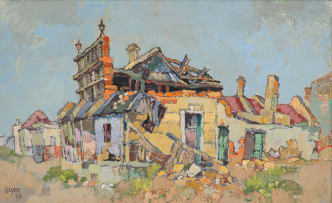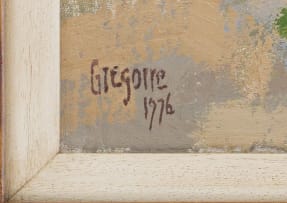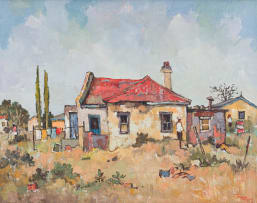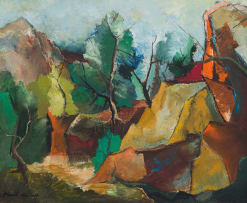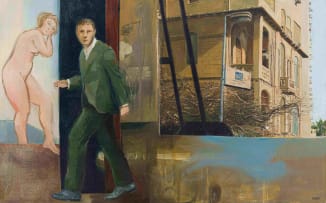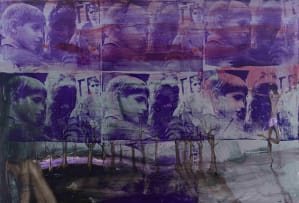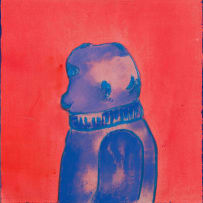Modern, Post-War, Contemporary Art
Live Virtual Auction, 7 - 8 November 2021
Evening Sale
About this Item
signed and dated 1976; signed and inscribed with an alternative title in English and Afrikaans on the reverse
Notes
Despite depicting a wide range of subjects over his long career, Gregoire remains synonymous with views of District Six. He was drawn to the colourful action of the area, the domestic hubbub, as well as the romantic and often crumbling facades. He also recognised the area's symbolic power against a backdrop of social and political injustice. Of course, in February 1966, District Six was declared a whites-only area under the infamous Group Areas Act (1950), leading to the demolition of homes and the forced removal of the largely coloured residents. The current lot, with its collapsed walls, ruined façade, and rotting beams and trusses exposed to the sky, is a handsome and poignant reminder of a lost history, not to mention an evocative monument to a displaced community. While the artist documented the disappearance of District Six over a decade, it is no coincidence that this work, an out-and-out resistance picture, should appear in 1976 in the aftermath of the student uprising in Soweto. This particular corner house clearly resonated with the artist. He made a beautiful pastel sketch of the scene, before working up the larger version in oils.
Literature
Martin Bekker (1990) Gregoire Boonzaier, Cape Town: Human & Rousseau, illustrated in colour on page 50 with a pastel sketch of the same scene.

